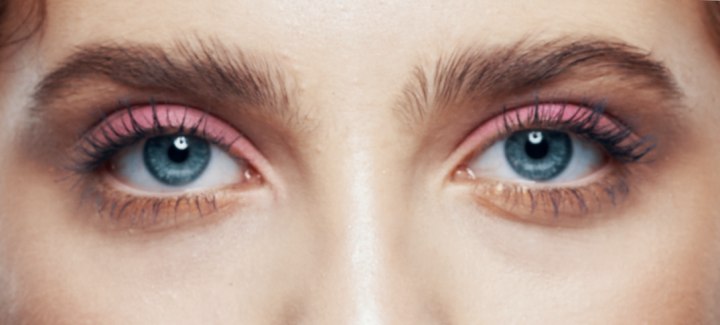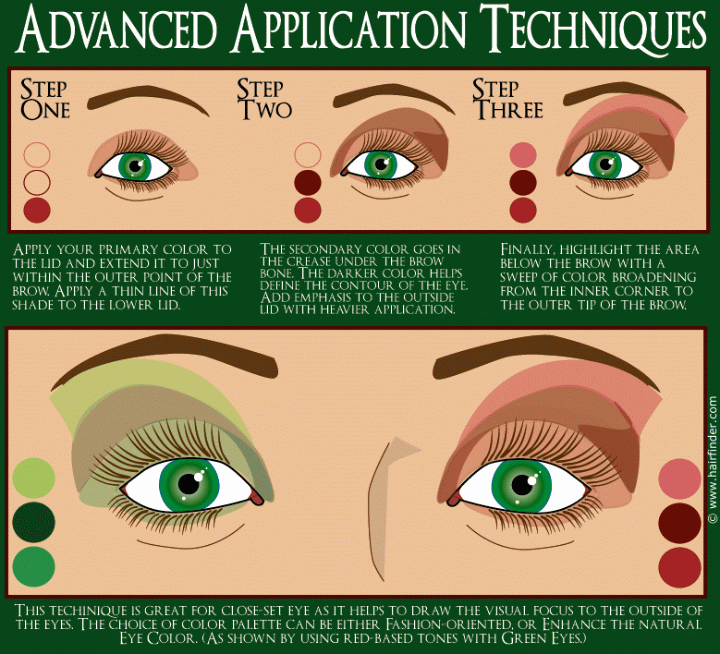Advanced Shading for the Eyes

So, you’ve been wearing cosmetics for a while and you feel you’re ready to get a little more adventurous with your eye make-up. Or, perhaps you’ve gotten into a rut and just want to re-evaluate what has become a habit and correct some possible mistakes. Whatever your reasons, you are reading this because you want to know more about using your eye shadow more effectively.
It’s easy to misuse a product like eye shadow. I mean, for many women the choice of eye color is based entirely on the outfit they’re wearing. It’s a means by which you can add a touch of blue to your eyelids to reflect the color of your new blouse. And in ages past, eye color cosmetics have given us countless psychedelic and extreme looks designed to BE fashion statements in and of themselves.
Let’s look as some of the ways you can alter the look of the eyes with shadows.
Contouring Eye Color
Some women find that their eyes aren’t as “deep” as others and they lack some of the natural “shading” that comes as a result. Skillful use of eye shadow can correct this (and can be simply used to enhance the contours that already exist on an individual). The trick is to use darker colors along the lines where there would normally be deeper creases and indentations (or in the creases and indentations that exist to deepen their appearance).
This technique involves using three coordinating shades of eye color – one light shade, and dark shade and one that’s somewhere in the middle. Start by applying the middle shade across the upper eyelid and extending it outward toward the outer tip of the eyebrow (if desired). The exact area covered by this shade is up to you, so feel free to adjust it as you desire. Follow this by applying and slim line of shadow along the top edge of the lower lid beneath the eyelashes.
Next, create (or emphasize) a crease between the eyelid and brow area by using the darker shade in that area concentrate on the crease for the heaviest area of application and use a lighter touch as you go up along the brow bone. This should follow the upper line of the eyelid area color application.
Finally, use your lighter color along the brow bone just beneath the eyebrow in order to make this area stand out more prominently. The interplay between the lighter and darker shades will make the brow stand out and the darker area (the crease) recede making the eyes appear deeper. You can also enhance the color of the eyes by using specific color palettes, but we’ll discuss that in a moment.
Close-Set Eyes

For those individuals whose eyes are set close together, eye shadow can be used to create the illusion that the eyes are spaced further apart. This is done by using the shadow colors to darken the outer boundaries of the eye area and thereby make the space between the eyes appear more prominent by comparison. The overall effect is a more balanced appearance in the facial features.
To achieve this effect, we use a three-shade palette of shadow color – one light, one medium level, and one dark. Start with applying the medium-level shade to the upper lid of the eye, expanding the “lid area” slightly toward the outside of the face. Once the upper lid is shaded, use a thin line of eye color along the underside of the lower lid’s lashes and merge it at the outer corner of the eye. Next, apply the darker shade into the crease of the eye and expand that area as you make your way to the outside of the eye. You should also intensify the application to darken the outer edge of the eye.
Finally, use your lighter shade to create a paler ridge along the underside of the brow bone in the eye socket. This can expand as you approach the outer edge of the eye, forming a clean demarcation line, or fading out with subtle blending. The key thing to remember is to keep the darkest shading to the outside of the eyes in this situation.
Continue reading ...